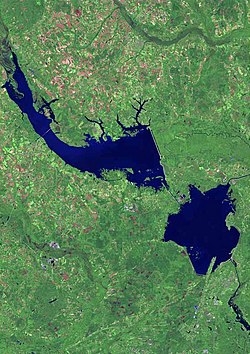
This is a list of lakes and reservoirs in the state of South Carolina in the United States. All major lakes in South Carolina are man-made. Swimming, fishing, and/or boating are permitted in some of these lakes, but not all.

This is a list of lakes and reservoirs in the state of South Carolina in the United States. All major lakes in South Carolina are man-made. Swimming, fishing, and/or boating are permitted in some of these lakes, but not all.

